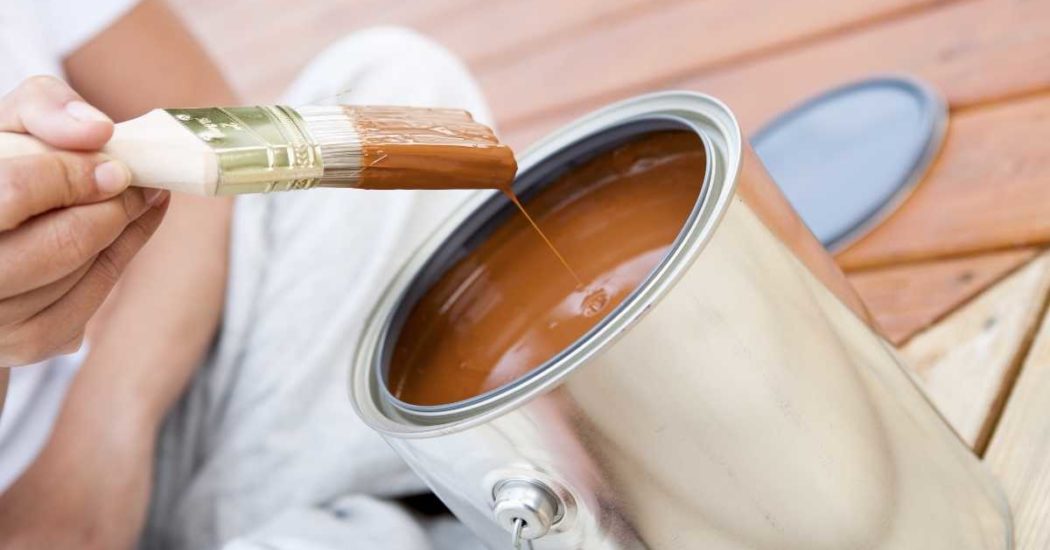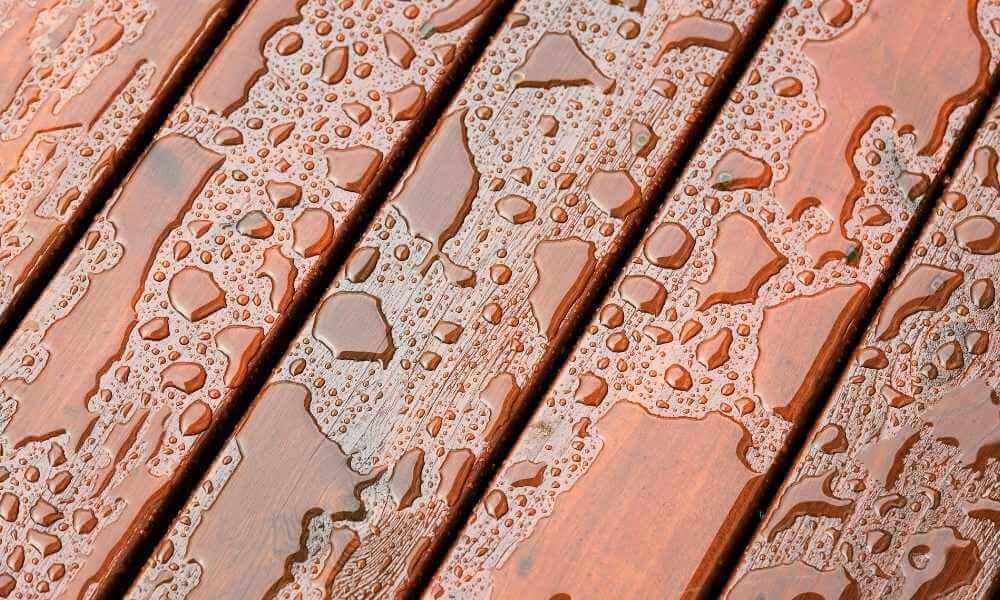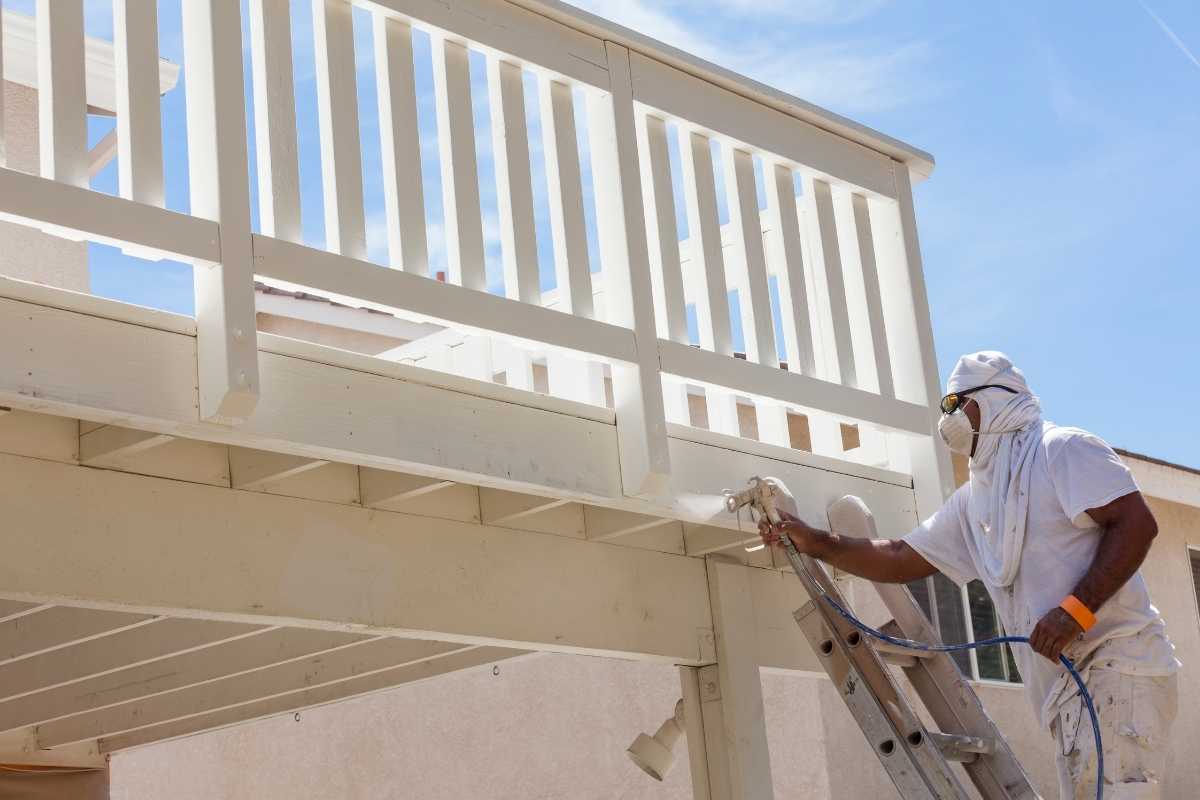
Call Us Today!

Call Us Today!

Deciding whether should i paint or stain my deck can be a difficult decision. Both options have their own set of pros and cons, and the right choice will depend on several factors, including the type of wood, the condition of the deck, and your personal preferences.
Deck stain is a type of coating that is applied to wood decks to protect them from the elements and enhance their appearance. Deck stain is designed to penetrate deep into wood fibers and provide a protective barrier against water, UV rays, and other environmental factors that can cause the wood to rot, warp, or fade over time.
Deck stains come in a variety of colors and finishes, including transparent, semi-transparent, and opaque. Some deck stains are also formulated to contain mildewcides and fungicides to help protect the wood from mold and mildew growth.
Related: Should You Stain Underneath Your Deck?
Similar to stains, deck paint is a type of coating that is applied to wood decks to protect them from the elements and enhance their appearance.
Deck paint is typically thicker than deck stain and creates a solid coating on the surface of the wood, rather than penetrating the wood as do stains.
This layer provides a protective barrier against water, UV rays, and other environmental factors that can cause the wood to rot, warp, or fade over time.
Deck paint is available in a range of colors and finishes, and it can be used to achieve a variety of different looks, from matte or gloss to textured finishes. Some deck paints are also formulated to contain mildewcides and fungicides to help protect the wood from mold and mildew growth.

Deck paint, on the other hand, creates a solid, opaque film on the surface of the wood that covers the natural grain and texture.
Because paint forms a thicker, more protective film on the surface of the wood, it is generally considered to be more durable than stain. However, a stain is known for its ability to preserve the natural beauty of the wood, which makes it a better choice for some types of wood and some aesthetic preferences.
You also want to consider the weather damage that can occur to a painted deck.
Decks that are stained require less maintenance than decks that are painted. A stain will need to be reapplied after 2-3 years, while the paint will last between 5-10 years before it needs to be recoated. However, this doesn’t factor in any scratches and chipping that may occur to your deck. A painted deck can look unsightly in a short time.
Deck paint comes in a wider variety of colors than deck stain, and it can be used to achieve a wider range of looks, including solid, opaque colors. Deck stain typically comes in a more limited range of colors, and it is typically used to enhance the natural color of the wood.
Deck paint is thicker and more difficult to apply than deck stain. It requires more preparation, more coats, and more time to dry between coats. Deck stain is relatively easy to apply, and it dries quickly.
Yes, the paint lasts longer than a stain on the surface of a deck! Paint is a more durable chemical material that has a great finish, and if applied correctly, it will last over 10 years before repainting.
Painting your deck has several advantages, including:
 Reduced natural beauty: Because paint creates a thick, opaque film on the surface of the wood, it can cover up the natural grain and texture of the wood, reducing its natural beauty.
Reduced natural beauty: Because paint creates a thick, opaque film on the surface of the wood, it can cover up the natural grain and texture of the wood, reducing its natural beauty.Staining your deck has its own set of advantages, including:
When choosing between painting or staining your deck, there are several factors that you should consider, including:
Some types of wood, such as cedar and redwood, are naturally resistant to rot and decay. This means that they do not need to be painted or stained. Other types of wood, such as pine and spruce, are not as resistant to rot and decay and will need to be painted or stained to protect them.
If your deck is in good condition, staining may be the best option. If your deck is in poor condition, painting may be the best option.
Ultimately, the choice between painting or staining your deck will come down to your personal preferences. If you want to enhance the natural beauty of the wood, staining may be the best option. If you want to create a bold, colorful look, painting may be the best option.
Deciding whether to paint or stain your deck can be a difficult decision. Both options have their own set of pros and cons, and the right choice will depend on some factors, including the type of wood, the condition of the deck, and your personal preferences.
Carefully consider all of these factors before making your decision, and don’t hesitate to consult a professional from Kind Home Solutions for advice on the best option for your Colorado home or business.